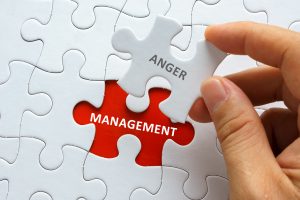I. Introduction
The concept of emotional regulation is essential in understanding how individuals manage their emotional experiences and reactions in various contexts. It encompasses a range of processes that enable individuals to influence which emotions they have, when they experience them, and how they express those emotions. The importance of emotional regulation becomes particularly evident in educational settings, where the ability to foster positive emotional experiences can significantly impact childrens development. For instance, social leadership in early childhood education plays a critical role in promoting emotional intelligence and self-regulation among young learners (Dey M, 2024). Additionally, contemporary studies suggest that integrating mindfulness-based interventions can further enhance emotional regulation by teaching individuals to accept and manage intrusive thoughts without judgment (Reis A et al., 2024). Hence, a comprehensive understanding of emotional regulation is not only pivotal for personal development but also for fostering supportive educational environments.
Please also review AIHCP’s Behavioral Health Certifications, as well as AIHCP’s Anger Management Program, as well as its Grief Counseling Program. Emotional regulation plays a key role in anger management and other stress management techniques.

A. Definition of emotional regulation
Understanding emotional regulation is crucial for navigating the complexities of human behavior and interpersonal relationships. At its core, emotional regulation refers to the processes through which individuals influence their emotions, encompassing the awareness, management, and expression of feelings. This regulation can be considered a multifaceted construct, integrating cognitive and behavioral strategies to modify emotional responses (Rojas-Saffie JP et al., 2024). The importance of emotional regulation is underscored in various contexts, such as military leadership, where the ability to maintain emotional stability under pressure is vital for effective decision-making and responsibility (S Leshchenko et al., 2024). Moreover, the interplay between emotional regulation and personality traits suggests that these emotional management strategies are not merely reactive but can also become habitual behaviors shaped by an individuals experiences and interactions. Consequently, a comprehensive definition of emotional regulation must account for its dynamic nature and its integral role in fostering resilience and adaptive functioning across diverse situations.
B. Importance of emotional regulation in daily life
Emotional regulation plays a crucial role in daily life, influencing not only individual well-being but also interpersonal relationships and overall productivity. Effective emotional regulation enhances self-awareness, allowing individuals to identify and manage their emotions in various situations. This skill is particularly beneficial in stressful environments, as it aids in reducing anxiety and improving decision-making capabilities. For instance, young people utilizing AI-based mHealth apps have reported significant improvements in emotional self-awareness and regulation, suggesting that such tools can foster healthier emotional responses in everyday contexts (Hiller S et al., 2025). Notably, without proper emotional support, individuals may struggle to maintain these positive behaviors, leading to negative outcomes when faced with challenges (Y Vandenplas et al., 2023). Therefore, promoting emotional regulation through targeted interventions not only enriches personal experiences but also cultivates a more productive and harmonious society, underscoring its importance in daily life.
It is essential not to let anger or resentment or other emotions control us. They are not bad in themselves but they can produce bad fruits. Hence for work life, social life, family life and as well as personal health, it is important to control emotions from controlling us. Emotional regulation is a key way to help one better take control of life.
C. Overview of the essay structure
An effective essay on emotional regulation should be structured to facilitate a logical flow of ideas and arguments. The introduction must present the topic, outline the significance of emotional regulation, and establish the thesis statement, guiding the reader on what to expect. The body paragraphs should systematically examine various aspects of emotional regulation, incorporating empirical evidence and expert opinions. For instance, research highlighted in (Shan J et al., 2025) provides insights into the role of emotional management in athletic performance, underscoring its practical implications. Subsequent sections could delve into the neurobiological underpinnings of emotional regulation, as discussed in (Bardel G et al., 2024), which outlines critical brain regions and pathways involved. Finally, the conclusion should synthesize the main points, reiterating the importance of emotional regulation in diverse contexts and offering recommendations for future research or applications, thereby ensuring the essay is comprehensive and impactful.
II. Theories of Emotional Regulation
Emotional regulation, a critical aspect of psychological well-being, encompasses various theoretical frameworks that explain how individuals modulate their emotional responses to diverse stimuli. One prominent theory is Grosss Process Model, which outlines strategies for regulating emotions at different stages of emotional experience, including situation selection, modification, and cognitive appraisal. This model emphasizes the importance of cognitive appraisal in influencing emotional responses, thereby suggesting that emotional regulation can be learned and adapted over time. The intersection of technology and emotional regulation has also emerged as a significant area of study, where individuals utilize digital tools to facilitate emotion management in daily life. A diary study revealed that people actively employ various technologies to navigate their emotions, highlighting the contemporary relevance of digital platforms in emotional regulation practices (Smith W et al., 2022). Moreover, understanding emotional regulation in the context of overall mental health ties directly to definitions that acknowledge both positive and negative emotional states as vital components of a fully lived experience (Galderisi S et al., 2015).

A. Overview of key theories (e.g., Gross’s Process Model)
In the field of emotional regulation, key theories provide insightful frameworks for understanding how individuals manage their emotional experiences. Grosss Process Model is prominently recognized for outlining a sequence of emotion regulation strategies, encompassing situation selection, situation modification, attentional deployment, cognitive change, and response modulation. This model illustrates the dynamic nature of emotional regulation, where individuals can apply varying strategies at different points in the emotional response cycle. For instance, research involving people living with HIV/AIDS (PLWHA) highlights the practical application of these strategies, underscoring how supportive environments facilitate positive emotional outcomes while maladaptive behaviors can emerge from ineffective response modulation (Nabila IN et al., 2025). Similarly, the dual-process theory of impulsivity elucidates the interplay between emotional regulation self-efficacy and risk-taking behavior among college students, emphasizing the importance of emotional self-efficacy in mitigating impulsive actions (Zhang R et al., 2025). Collectively, these theories underline the complex mechanisms that govern emotional regulation across diverse contexts.
B. The role of cognitive appraisal in emotional regulation
Cognitive appraisal serves as a critical mechanism in the process of emotional regulation, influencing both individual responses to stressors and overall emotional well-being. By evaluating the significance of various stimuli and personal circumstances, individuals engage in an intricate mental process that shapes their emotional reactions. For instance, research indicates that dispositional optimism can play a mediating role in how one perceives challenges, such as vision impairment, and subsequently regulates emotional outcomes like depressive symptoms among older adults (Ji X et al., 2025). Similarly, mindfulness has been shown to enhance the clarity of fairness judgments, further supporting adaptive emotional responses in workplace settings where perceived injustices occur (Chaprana V et al., 2025). Ultimately, the ability to appraise situations positively can foster resilience and promote healthier emotional regulation strategies, highlighting the importance of cognitive processes in managing emotions effectively across diverse contexts.
C. Differences between adaptive and maladaptive regulation strategies
Understanding the differences between adaptive and maladaptive regulation strategies is crucial for enhancing emotional well-being. Adaptive strategies, such as cognitive restructuring and mindfulness techniques, focus on altering thought processes and accepting emotional experiences, which tend to foster resilience and improve psychological outcomes (Xu M et al., 2024). In contrast, maladaptive strategies, such as avoidance or substance use, often provide short-term relief at the expense of long-term emotional stability, leading to increased stress and potential psychological distress (Eda Yılmazer, 2024). The reliance on adaptive strategies has been linked to better performance and lower levels of stress in educational settings, thereby emphasizing their importance for both students and educators. Moreover, recognizing these distinctions allows individuals to develop targeted interventions that promote emotional health, particularly in high-stress environments. Thus, the choice of regulatory strategy plays a vital role in shaping both individual well-being and broader social interactions.
III. Techniques for Emotional Regulation
In the context of emotional regulation, various techniques have emerged as effective strategies for managing emotional responses. Among these, the practice of identifying and understanding ones emotions stands out as foundational for building emotional intelligence, a construct that encompasses recognizing emotional states in oneself and others, guiding thoughts and behaviors based on emotions, and implementing effective emotion regulation strategies (Hogeveen J et al., 2016). One innovative approach is the Early Adolescent Skills for Emotions (EASE) intervention, which targets young individuals to develop coping skills through structured group sessions. This program not only teaches participants to identify their feelings but also addresses physical arousal linked with stress and provides strategies for engaging in meaningful activities that promote positive mood changes (Dawson K et al., 2019). The collective application of these techniques facilitates enhanced emotional well-being and is critical, particularly during adolescence, a period marked by heightened vulnerability to emotional dysregulation and mental health issues.

A. Mindfulness and its impact on emotional awareness
In recent years, mindfulness has emerged as a pivotal practice in enhancing emotional awareness, impacting individuals’ abilities to regulate their emotions effectively. By promoting a non-judgmental focus on the present moment, mindfulness cultivates an increased awareness of one’s thoughts and feelings, which enhances emotional recognition and understanding. This heightened emotional awareness allows individuals to respond to stressors with greater clarity and intent, rather than reacting impulsively. Studies indicate that mindfulness practices can significantly decrease burnout and emotional exhaustion, particularly in high-stress environments like medical education, where students experience increased psychological distress ((Denisse Zúñiga et al., 2021)). Additionally, in the context of the COVID-19 pandemic, the need for emotional regulation has become even more critical, as healthcare workers face unprecedented levels of anxiety and fatigue. Integrating mindfulness into their routine has shown promise in reducing emotional fatigue and enhancing overall well-being ((Sasangohar F et al., 2020)). Thus, mindfulness emerges not just as a therapeutic tool but as a vital practice for fostering emotional resilience amidst challenges.
In addition to meditation, journaling can play a helpful tool in regulating emotion. Simply by keeping a log and writing about how one felt and why and on what date, can help one manage emotions and understand them better when triggers emerge. In addition, sleep, good hygiene and sometimes counseling are all ways to help manage emotions from all aspects.
B. Cognitive-behavioral strategies for managing emotions
When it comes to handling emotions, cognitive-behavioral strategies are pretty important, because they help you understand what sets off your feelings and give you better ways to deal with them. Basically, the idea is that your emotions come from how you think about stuff, pointing out how your thoughts and feelings work together. So, like, cognitive restructuring lets you question and change bad thought patterns, helping you react emotionally in a better way. This is super useful when things get intense, like in sports, where athletes often feel really anxious or frustrated. For example, a study looked at table tennis players and found that focusing your attention, which is a cognitive strategy, was the go-to way to keep emotions in check during a match – showing just how important specific cognitive strategies can be (Martinent G et al., 2015). By getting better at these cognitive-behavioral strategies, you not only get better at managing your emotions, but you can also perform better and feel better in all sorts of situations (Malekzadeh M et al., 2015).
Cognitively, one can simply name the emotion that is emerging. Whether depressed, stressed or feeling angry, one can identify the swelling feeling inside and properly label it. It is crucial to validate this natural emotion. The emotion itself should not be dismissed as repugnant or bad, but instead it should be seen as simply a natural response. It is what one does with the response or how one allows the emotion to make one feel that is detrimental. Beyond validating, it is also crucial to identify the triggers that caused the emotional reaction and correlate them and why they triggered a certain reaction.
Through CBT and other behavioral strategies, one can learn to understand feelings and thoughts and how to reframe them and better understand them and teaching one how to change and alter thoughts that come during distress that cause unwanted emotional responses.
C. The use of expressive writing as a regulation tool
Expressive writing is a pretty useful tool; it helps people deal with their emotions. When things get tough, it allows them to put their feelings into words and work through them. Studies have actually shown that writing expressively can improve emotional management and help people become more resilient, especially when they’re dealing with trauma or chronic illnesses. For example, there was this study (U Tykha, 2025) with Ukrainian university students. It showed that when expressive writing was part of their trauma-informed learning, they got better at managing their emotions and bouncing back during conflicts. Also, people with multiple sclerosis said they felt a lot better after doing an expressive writing program. They talked about feeling more empowered and discovering things about themselves as they worked through their feelings (Pawar P et al., 2025). All of this shows that expressive writing is not just good for therapy, but also for improving emotional well-being in general. That’s why it’s important in education and psychology when we’re trying to help people regulate their emotions.
IV. Emotional Regulation in Different Contexts
Emotional regulation is really important in lots of situations. You see it especially in schools. How parents get involved and how kids are learning really changes how they feel. Studies have shown that when parents are really there for their kids, those kids tend to handle their emotions better and do better in school. For example, there’s research that says when parents use a supportive style, kids are more emotionally stable (Jain B et al., 2025). But when kids learn from home, things get tricky. They have to be good at organizing themselves and controlling their emotions so they can stay healthy. Not seeing people in person can make them feel lonely and stressed. That’s why it’s super important for teachers and other students to give them support (Puhach V, 2025). So, when we think about emotional regulation, we’ve gotta remember that family support and the learning environment work together. We need to find ways to help kids with their emotions that fit their specific needs. The interplay between the two is essential.
A. Emotional regulation in interpersonal relationships
Generally speaking, emotional regulation is quite important for healthy relationships, as it helps people manage emotions in social situations. Folks who can navigate their feelings effectively tend to communicate and empathize better, and respond constructively to others’ emotional needs. It’s a process that smooths interactions and helps prevent conflicts that can arise from feeling dysregulated; intense emotions sometimes lead to misunderstandings and disproportionate reactions, you know? Furthermore, emotional regulation builds trust and safety, encouraging openness – vulnerability even – which is essential for deeper connections. Because emotional dysregulation manifests in different ways, including anxiety or irritability, understanding this becomes vital for relational resilience. In most cases, mastering emotional regulation improves individual well-being and the quality of interpersonal bonds, making it a cornerstone of, well, effective relationship management (Subramanyam A et al., 2020), (Kioupi V et al., 2019).
B. The role of emotional regulation in the workplace
Emotional regulation? It’s pretty important in creating a workplace that actually works, influencing both how employees feel and how well the organization functions overall. It helps folks handle their emotional reactions, which in turn can prevent burnout – that state of feeling totally exhausted and cynical. Plus, it encourages work engagement, something tied to energy and commitment on the job (Arnold B Bakker et al., 2022). When people are good at managing their emotions, they become more resilient to stress at work, and they also contribute more positively to how teams work together. What’s more, emotional regulation is becoming even more vital as organizations rely more on virtual environments and digital interactions. The rise of metaverses kind of suggests that emotional subtleties can have an impact on these digital interactions, underscoring the necessity for flexible emotional capabilities in both real and virtual workplaces (Yogesh K Dwivedi et al., 2022). So, developing emotional regulation skills is crucial for keeping employees engaged and building a solid, cohesive work culture.
C. Emotional regulation in mental health treatment
Mental health treatment is increasingly recognizing the importance of incorporating emotional regulation strategies, as practitioners aim to deliver more comprehensive and effective therapy. Alternative interventions such as dance therapy exemplify this trend, demonstrating their ability to alleviate anxiety and depression symptoms and to boost emotional resilience, for example, among college students (Ying C, 2025). Moreover, the experiences of individuals with HIV/AIDS highlight the intricate aspects of emotional regulation. In these cases, social support networks can be critical in encouraging positive emotional reactions and adherence to treatment protocols (Rokhmah D, 2025). Mental health professionals, in understanding this complexity, can adapt interventions to focus not just on reducing symptoms, but also on fostering emotional well-being. Generally speaking, these strategies are vital for reducing the negative impacts of stigma and social isolation and thus help to improve the quality of life in different communities as they navigate mental health issues.
It is essential to control oneself, identify emotions and understand them. Through positive approaches, we can cope with our emotions and control ourselves for better social relationships and better mental health.

However, sometimes emotions can get the best of us and we can turn inward away from what needs done and turn to darker things. Maladaptive coping can result when emotions become out of control. Substance abuse, self harm, emotional eating, withdraw and isolation, and dismissing responsibilities are all results of maladaptive coping with emotions. Hence it is important to become the pilot in control of one’s emotional self.
Anger management and stress management therapies employ emotional regulation in a healthy way to push one away from maladaptive practices and dangerous reactions.
V. Conclusion
To summarize, emotional regulation is quite important for psychological well-being; it has an impact on risk-taking and even addictive behaviors. Adolescents, in particular, are susceptible, especially since advertising and other things can change how they feel and the decisions they make about e-cigarette use (Chen Y et al., 2019). It’s also worth noting that emotion dysregulation and things like food addiction are linked; this shows just how complex these emotional processes are and that trouble managing emotions can lead to some negative behaviors (Tatsi E et al., 2019). Thus, we really need targeted interventions to help people learn effective emotional regulation strategies, particularly among those who are more vulnerable. When people can better understand their emotions and become more resilient, they might find it easier to navigate the emotional stuff that contributes to risky behaviors. These types of initiatives aren’t just good for mental health but also essential for public health strategies that aim to reduce how common addictive behaviors are.

Please also review AIHCP’s Behavioral Health Certifications and see if they meet your academic and professional goals. Many of the programs are designed for clinical and non clinical professionals within the scope of their practice. This includes healthcare professionals as well as behavioral health professionals and those in pastoral care and ministry. Please review AIHCP’s numerous programs in Stress Management, Anger Management, Grief Counseling, Spiritual Counseling, Crisis Intervention and Meditation Instruction.
A. Summary of key points discussed
How we handle our emotions is really a complicated interaction of things like our biology, our mindset, and what’s going on around us. And generally speaking, a major point to consider is this microbiota-gut-brain axis thing; basically, all those trillions of tiny organisms inside us appear to have a pretty important role in shaping how we feel and act. They do this through our immune system and how our brains communicate. To give you an idea, some new research is showing that when we’re stressed or when the mix of those microorganisms changes, it might contribute to mood disorders. This suggests we should look into therapies that target these microorganisms for things like anxiety and depression (John F Cryan et al., 2019). Moreover, there’s a general agreement in the sports world that concussions mess with how athletes regulate their emotions because it affects their thinking. This highlights the need for careful clinical judgment when helping them recover (McCrory P et al., 2017). These ideas show how complex emotional regulation really is and open up possibilities for interventions aimed at improving psychological health.
B. The significance of developing emotional regulation skills
Generally speaking, nurturing the ability to regulate emotions proves highly valuable in both personal and professional arenas. Individuals who can effectively manage their feelings are often more adept at handling relationships and workplace situations, given emotional intelligence’s impact on productivity and how well teams work together. Studies suggest self-awareness and clear communication, key aspects of emotional intelligence, help foster inclusive settings that value different viewpoints (Turebayeva G et al., 2025). Moreover, for some, like individuals with autism, learning to regulate emotions is connected to interoceptive awareness—that is, the ability to understand internal bodily cues that signal emotional states. Addressing this link through specific strategies not only improves emotional management but, in most cases, also boosts involvement in everyday activities (Barmpagiannis P et al., 2025). Therefore, developing emotional regulation isn’t just good for the individual; it’s also crucial for building connections and encouraging inclusivity in different social settings.
C. Future directions for research and practice in emotional regulation
Looking ahead, it seems clear that future research into emotional regulation would do well to consider complementary approaches—yoga, for example—for their ability to perhaps lessen anxiety and bolster emotional resilience. We’ve seen that yoga may regulate emotions through various mechanisms, suggesting it could be a useful addition to treatment for anxiety disorders; more research is definitely needed to see how it works across different groups of people (Thakar N et al., 2024). On another note, it’s becoming increasingly important to understand how what happens at work affects family life, especially when it comes to emotional regulation. Studies looking at how being excluded by a supervisor affects family relationships—specifically through the lens of emotional regulation—could yield some very important understanding. This could in turn inform interventions designed to foster emotional resilience in workplace settings (Zeng Q et al., 2024). To sum up, expanding our research to take into account both holistic and contextual elements will be key for developing effective strategies for helping people and improving mental well-being overall.
Other AIHCP Blogs
Fear of Monsters. Access here






















 Written by Claire Szewczyk
Written by Claire Szewczyk Exposure Therapy
Exposure Therapy  Author Bio:
Author Bio: